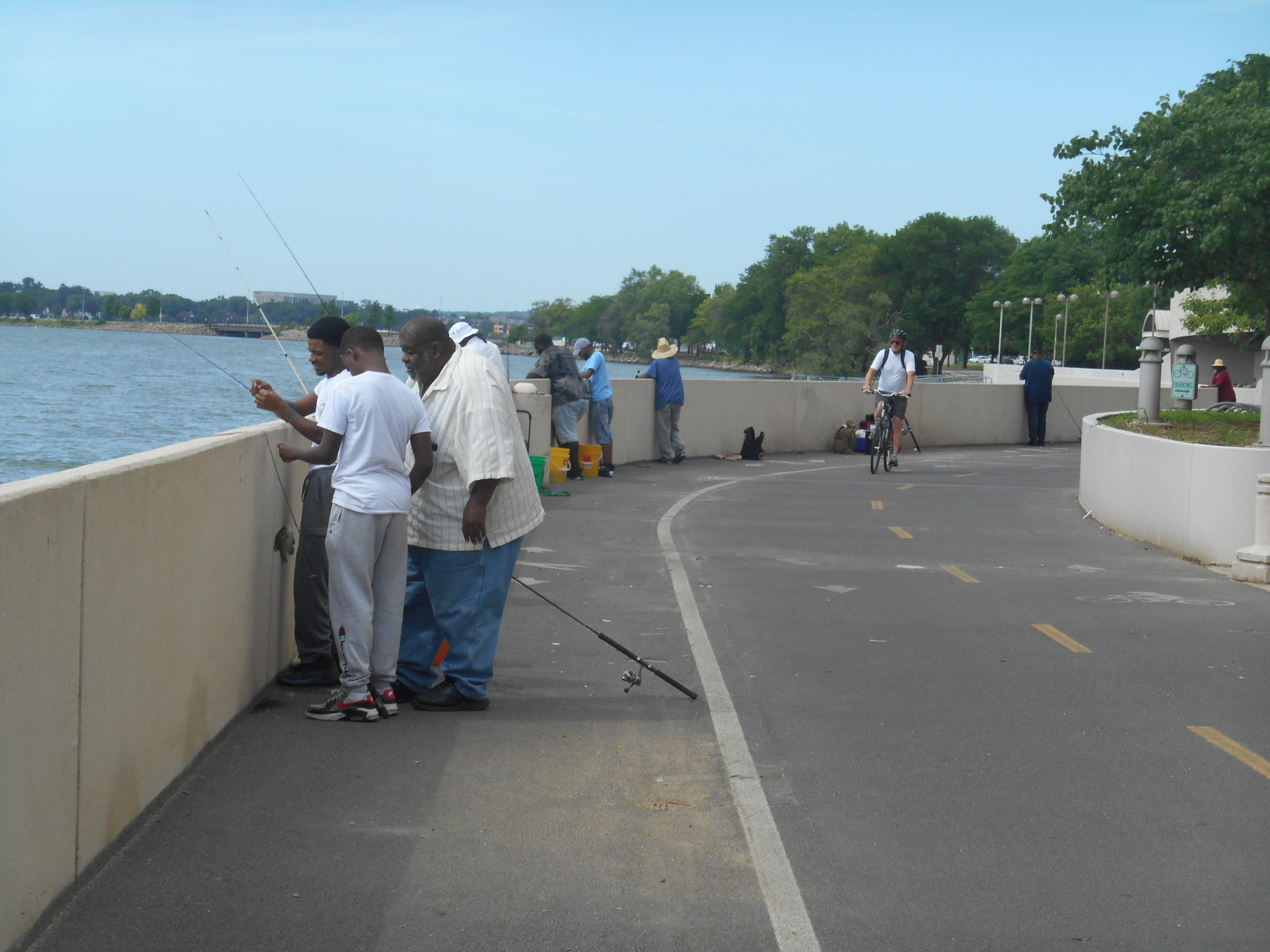[Above: People fishing at “the wall” at Monona Terrace in July 2022. Photo-Maria Powell]
Dear WSJ:
Today’s story by Dean Mosiman, “National design heavyweights want to help reimagine Lake Monona waterfront,” was notable for what it didn’t say and questions it didn’t ask.
Mosiman wrote that the park on Lake Monona’s shoreline downtown was “built on filled lake bed.” This is true. But it would be much more accurate to say that much of it, including Monona Terrace, was built on a toxic dump–filled with Madison newspapers, MGE coal ash, city construction debris, residential garbage, and a variety of other trash. Read the history here.
As I wrote last year, the Monona shoreline dump has been leaching toxic contaminants into Lake Monona for decades. Are contaminants building up in fish that shoreline anglers catch and eat? What kinds? At what levels? Nobody is measuring. It’s the age-old “don’t test and it’s not there” magical approach to avoid dealing with toxic chemicals in the environment.
How will the proposed lakeshore developments affect Lake Monona water quality? Environmental and public health? Fish and wildlife? Will the proposed developments disrupt this old dump? Will more “fill” need to be placed in the lake to make space for the developments? What will the fill consist of?
Mosiman’s story doesn’t raise these questions, and many others that should be asked.
Apparently city officials, drunk and starry-eyed (envisioning the money to be made on these developments) aren’t asking them either. As I wrote last week, “Enough is enough” is not in their vocabulary. Saying no to more development here is inconceivable and unspeakable to Madison Powers That Be. The city must grow and grow and grow–even if it means growing into the lakes.
“Welcoming to people of all social, economic, and racial backgrounds”?
Mosiman wrote that “the city’s draft request for qualifications is ambitious and sweeping. The park, it says, must be a family-centered destination that’s welcoming to people of all social, economic, and racial backgrounds. It must inspire a deep connection with nature, history and place. Designers are asked to consider a number of water-based activities such as shore fishing, kayaking, sailing, paddle boarding, boating and swimming.”
Many shoreline anglers at Monona Terrace and Brittingham Bay are people of color, including a good number who drive from Milwaukee and other nearby cities. Many are low income and fishing for food. If you don’t believe this, see caption above with the above WSJ photo, this Scientific American story by Rae Tyson, MEJO’s book chapter “Invisible People, Invisible Risk” published by MIT Press and the documentary “Beneath the surface” by UW students.
How will shoreline anglers, especially anglers of color, be “welcomed” to this “ambitious and sweeping” “family-centered destination”? Will they be engaged in discussions about developments and how they will be “welcoming” to them?
Shoreline anglers are already experiencing a “deep connection with nature, history and place” when they fish from Monona Terrace and Law Park, whether they are aware of that or not. They are literally eating Madison’s “nature, history and place” when they consume the fish they catch, filled with contaminants from the garbage and other toxic wastes the city dumped there for decades.
Will these anglers be engaged in discussions about the existing advisories for mercury, PCBs, and PFAS in Lake Monona fish? Will any agency here do comprehensive testing in order to better understand (and reduce) the risks of eating this fish (which has never been done–again, see MEJO’s published book chapter)?
My well-informed guess–after almost 25 years as a resident, UW researcher, and community organizer here– is a resounding NO.
The media play key roles in framing public and political discussions, in shaping what is and isn’t considered in these discussions and resulting political decisions. If local media–especially WSJ, the state’s paper of record–don’t raise these issues and questions, they are often not on the public and political table at all. They are ignored.
As a result, the people who are already mostly invisible–such as low income anglers of color in this case– remain invisible and ignored. The serious health risks they face from eating Madison’s toxic past and present are also invisible.**
Who is the WSJ serving? The Powers That Be? Corporate and development interests? The Chamber of Commerce?
What about the People? ALL the People?
Or is the WSJ only serving Privileged White People?

